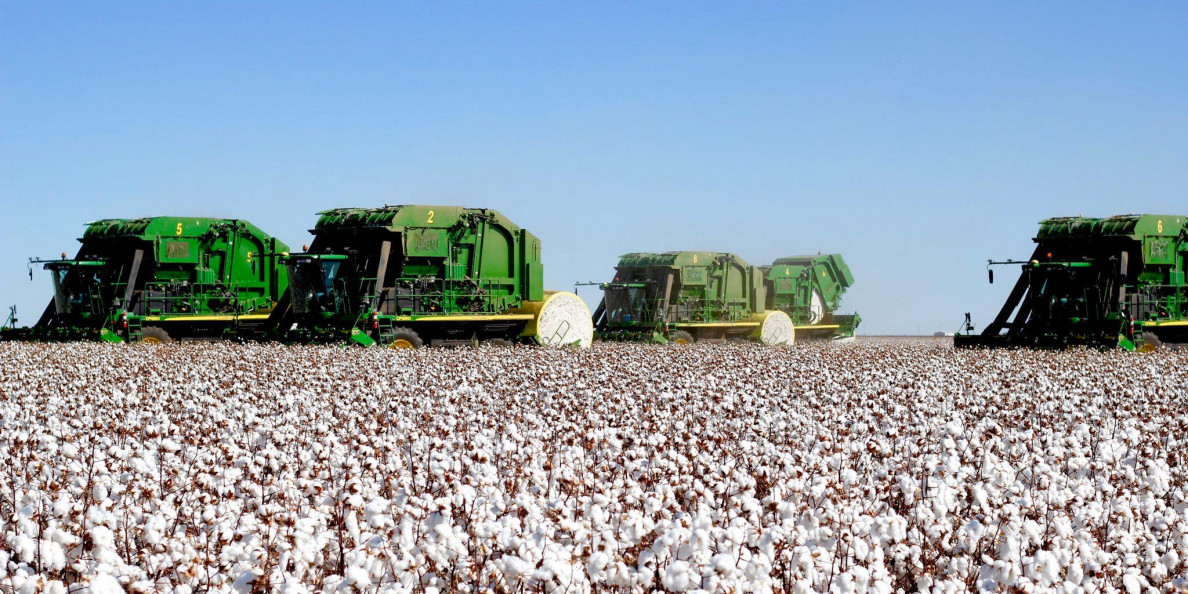By Jeff Thompson, Autauga Quality Cotton Association
Growers were greeted this past week with an excellent pricing opportunity, whether it was for old crop or those looking to forward price new crop. Following a jump in the LDP to 340 points, the December futures contract closed above 66 cents on Tuesday before ending the week at 65.08.
Growing concern over the impact Tropical Storm Marco and Hurricane Laura might have on the Southeast crop sparked the advance. Following active trading during the week, a new support level was formed at 65 cents, evidenced by repeated heavy buying volume at or near it.
As for the top end, technical charts indicate 67.57 as the next level of resistance. Though the LDP was adjusted downward to 150 points as a result of this rally, the bias is still for some upward momentum going into this week as the market continues to be influenced by factors other than cotton fundamentals.
Monday’s pre-storm crop report showed little change in conditions from the previous week. However, it did reflect a rapidly maturing crop with 27 percent having open bolls compared to last week’s 15 percent.
Hurricane Laura: It Could Have Been Worse
Sadly, Louisiana – which took the brunt of the storm – was most mature with 30 percent open. Thankfully, much of the Delta cotton is later this year as seen by Mississippi and Arkansas at 13 and 15 percent open bolls, respectively.
At this writing, crop damage estimates are still being determined. However, early reports seem to indicate Laura’s path was west enough to minimize damage to cotton.
There will likely be twisted plants and some boll rot of course, but considering the strength of Laura, the outcome could have been much more severe. What’s needed now is a long stretch of dry, sunny days. But, casting a look towards the Atlantic, this may be asking a lot as there are two more potential storm threats heading our way.
Export sales for the week, though not terrible, did not meet market expectations. Consequently, there was little price momentum to end the week. Net sales for 2020/21 were 156,000 bales.
Once again, primary buyers were China and Vietnam. In addition, weekly shipments of 277,500 bales were half that of the previous week. This lack of demand and overall poor cotton fundamentals makes one question how prices can remain where they are.
Disconnect Between Futures And Cash Prices
The answer lies in what we mentioned earlier – traders are not looking at fundamentals as much as they are outside influences. With a tremendous amount of money now flowing into managed funds and hedge funds, their managers view commodities favorably.
This is reflected in the most recent Commitment of Traders Report where the funds maintain a net long position of an equivalent of over four million bales.
As everyone knows, the futures price is only one part of the pricing equation for growers, the other being the basis.
Currently there is a disconnect between ICE futures and the cash price for U.S. cotton. Futures prices have become inflated buoyed primarily by China sales. This makes U.S. cotton the most expensive in the world, further eroding demand.
As a result, the basis has widened considerably over the past few weeks especially in the Southeast where it is now some 500 points wider than historical levels. Expect this to be the norm until a meaningful increase in demand is seen.
Where do prices go from here? Though some heavy clouds remain on the horizon, no pun intended, look for any move toward the next resistance level as a favorable pricing opportunity.
A lot depends on the China/U.S. trade deal remaining intact. Despite escalating political tensions between the two, it appears, for now, they plan to honor their commitment of purchasing U.S. cotton. If so, ICE futures at current levels, if not higher, will be supported though at the expense of the basis.


